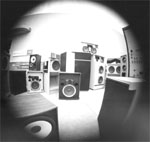Here's a new discussion to get into.
I feel both the RTA and the CLIO type systems have their usefulness, along with the waterfall type FFT analyzers. You can bet that Harman/JBL has all of them. The single sweep tone type of analyzer will give an idea of where weaknesses lie in the drivers ability to reproduce single frequencies in relation to all others with a given signal amplitude. The RTA will a give snapshot of how the driver and/or system can reproduce a complex set of frequencies when the whole spectrum is exciting the drivers all at once. After all...the harmonics involved, say, in pink noise, will probably cause other peaks and nulls, cancellations and summations in the driver diaphragms due to the imperfections inherently in the applied materials....and so will the fundamental frequencies in a sweep tone. There is no perfect driver....yet. So....all these tools are very useful in tuning a speakers response to zero in on the most accurate or pleasing sound by applying electrical tweaks in the form of passive or active crossover filters and EQ. In addition, the tools can be used to find or give a certain voicing characteristic to a musical instrument speaker such as for guitar by tailoring the components: cone material, geometry, thickness; voice coil dimensions and impedance; suspension compliance; motor size and strength....to give a certain amount of desirable distortion.
Any other comments you'd like to add...please do.
Thanks...have a great weekend.




 Reply With Quote
Reply With Quote


